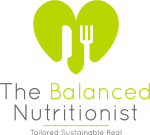Thanks to the emerging interest in all things ‘gut health’ related I am seeing many clients coming into the clinic who are already taking a probiotic.
9 times out of 10, after taking a case history, I arrive at the inevitable point that the probiotic they are taking isn’t going to work out for them and it’s probably doing very little to help their specific condition. So, to help your hip pocket, here are some basic things to consider if you simply want to purchase a probiotic for ‘general gut health’ so you spend your $ on something useful.
- Is there anything wrong with your gut? Are you uncomfortable after eating, feeling bloated or over full, experiencing pain or reflux or have constipation or diarrhea? If yes to any of these then consider a consult because 1 probiotic isn’t going to fix it. You need to look at food, lifestyle and potentially other supplements instead of an immediate probiotic.
- Probiotics are ‘strain specific.’ The strains should be listed on the bottle. This will generally mean that each ingredient has 3 parts. E.g. Bifidobacterium lactis Bi-07. If it doesn’t list all 3 names then you don’t really know what you are taking. So you can’t really be sure what the probiotic is for. Because each of these strains may benefit different systems. E.g. some strains may assist with immune health, others help in diarrhea management, others assist with constipation, some have research to support their use in allergies. You see what I mean? Do you go car shopping and buy a car? Or do you go and but a Ford Mustang 2017? (nice car by the way).
- If you know the strain and you are hungry for knowledge, you can look it up yourself. Type the strain into google. What comes up? I mean, scientifically validated research etc. Is there science to back up its use?
- Fridge stable… are you sure? Did you read the label? Does it say ‘fridge stable’ to 25 degrees? Remember we live in QLD… some of these fridge stables are likely fine off the shelf in Tasmania but not in Brisvegas. No point taking ‘dead’ bacteria.
- CFU: colony forming units. These bacteria are little. Teeeny tiny. And they are measured in ‘colony forming units.’ Get something a bit gutsy. Some of the brands available have 1 to 2 million CFU per capsule and that’s not going to really do too much. Therapeutically, very generally speaking, a good probiotic will offer 10 times this amount minimum. (N.B. with the exception of sacchroymysis boulardi strain, measured differently, more a yeast than a bacteria).
- Is there someone in the shop you can talk to? A nutritionist or a naturopath on the floor? A lot of pharmacists and health food shops will have someone professional on the floor. And hopefully I am hoping your eyes to the fact that ‘taking a probiotic’ doesn’t fully answer the question ‘what are you taking.’
- Have you thought about feeding your own friendlies? Maybe that’s a good place to start? You can encourage the health of your own gut bacteria by eating fibre rich foods and resistant starches… probiotics are transient.
- Are you buying online? Is the product TGA regulated? Reread my post on supplements, I personally don’t stock anything anymore that is not TGA listed. Or promote anything for that matter.
- More is not necessarily better. I..e if there are heaps of bacteria in it, doesn’t mean necessarily its better than just 2 or 3 strains. Refer to point 2 and 5. Also if it is just for ‘general health’ consider that strains in the ‘bifido’ and ‘lacto’ families are the main ones in our gut.
I hope that helped. And not confused you. I simply see many people spending hundreds of dollars on well marketed natural supplements including probiotics and then deciding it doesn’t work. It does. It’s just that there’s a bit more too it then just picking something off the shelf like dress shopping and trying it on for size. Furthermore, supplements are supplements… they don’t work unless you do. I.e. they supplement a good, basic, whole foods diet. And make up for the extra demands we are putting on our bodies in this day and age.






